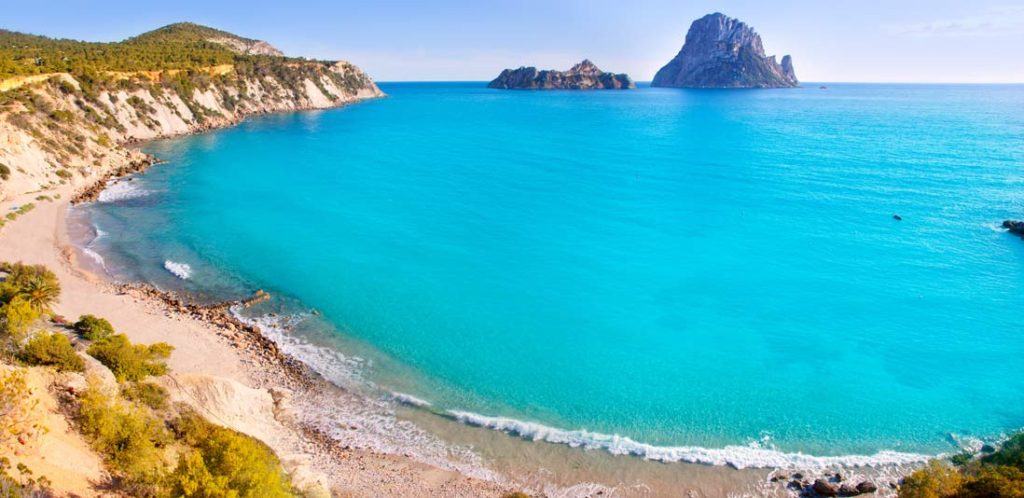It is located in the municipal term of Sant Josep, it covers much of the southwestern coast, protecting areas such as Cala D’hort, Cala Carbó and Cala Vedella, as well as the islets of Es Vedrà, Es Vedranell, Sa Conillera, S’illa des Bosc, S’espartar and Ses Bledes. This Park has a high biological value and a great environmental wealth and also has a wide variety of flora and fauna as well as variety of birds that nest in this area. Pristine beaches, cliffs and riddled with skyline, towering islets make up this beautiful region.
In the center of this natural area we found the beach of Cala D’ Hort and in front of it , the towering islets of Es Vedra and Es Vedranell , protected areas of high environmental value. Further south, in a wild and unspoiled area, right where it meets the southern and western part of the island are Llentisca Cap , an area of special botanical importance due to the large number of endemic species that inhabit it. From the numerous mountain elevations between which the Cape Cap Llentrisca and the peak of Sant Josep de Sa Talaia, constitute the highest part of the island, from here you will obtain spectacular panoramic views, so photography enthusiasts should not forget the camera because you will enjoy much.
There are several companies that organize trips for scuba diving in the waters of the reserve, some of the best diving spots are the cannon Conejera , Es Vedra , The boot or Bledas . The outputs are usually performed by boat , a journey of about 10 or 15 minutes later to start the dive.
How to get Nature Reserves Es Vedra, Es Vedranell i els Illots de Ponent?
The Nature Reserve of Cala d’Hort covers the southwest of the island, about Cala Carbo, Cala d’Hort and Cala Vedella, among others. You access this area from Sant Josep de Sa Talaia.




